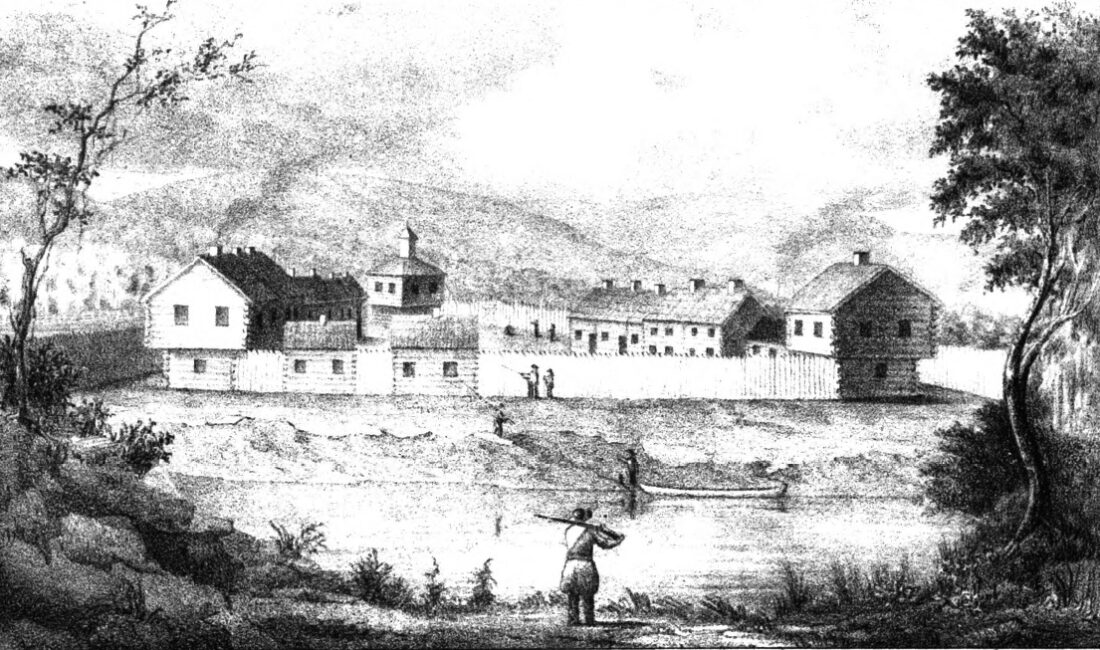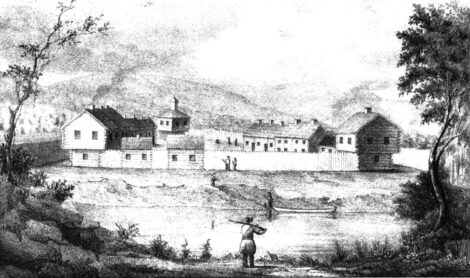Fort Frye provided refuge during an uncertain time
- (Photo provided) An artist’s rendering of Fort Frye.

(Photo provided) An artist’s rendering of Fort Frye.
Long before there was a school district named Fort Frye there was a fort named Fort Frye. Same location, just different points in history.
Shortly after members of the Ohio Company set up shop in Marietta in 1788 they began to notice the abundance of flat boats floating right past the new city on their way to cheaper land in Kentucky.
They knew that for growth to happen more people had to stop and stay for a while. Hopefully forever. The directors came up with a plan to populate two areas a short distance from Marietta. Today we know those areas as Belpre and Beverly/Waterford.
The land was free but came with strings attached. A lot of strings.
Settlers had to furnish land for roads.
They had to build a two-story house within 5 years, with a chimney and a cellar and had to be at least 21 feet long and 18 feet wide. At less than 800 square feet, it would be considered a small house today,
Plant at least 50 apple trees and 20 peach trees.
Clear at least 15 acres of pasture and plant 5 acres of crops.
Be furnished with guns and be the subject of militia laws.
They also had to be willing to band together and erect a block house or defend it.
Dozens of families agreed to this and on April 20, 1789, got into boats in Marietta and began paddling up the Muskingum to their new settlement. A few days later 20 more families joined them. A different group meanwhile was making their move to Belpre.
The Beverly/Waterford group got to work building cabins for temporary housing and preparing land for planting. There was always a threat of attack by the Native Americans who lived in the area. Early in May, just a few weeks after they arrived at their new home, they got word that a member of the Belpre community had been killed. This rattled the Beverly/Waterford group, who built a small block house for protection.
They soon returned to their daily routine of planting crops, clearing land, and building fences. Everything was fine for a few years until a third new settlement was attacked up the Muskingum at Big Bottom during the winter of 1791, near current day Stockport.
If they wanted to survive, they needed more than the block house they had constructed; they needed a fort that would hold the families who now lived in the area.
Construction soon began on a three-sided fort with three block houses as corners.
Working in teams, groups of men chopped down trees to build high walls and construct living quarters.
The group would live in the fort for the next four years, leaving only during the daylight to tend to the crop with at least one person always standing guard in the field.
Dean Tayler and Joseph Frye helped to teach nearly 50 children who lived in the fort that was named for him. It seems appropriate that the school district that ended up on the spot is named after a fort that was named after a teacher.
Lieut. Joseph Frye had advised the settlers to build a fortification after the Big Bottom attack and drew up the plans for the fort. He had come from a long line of officers who had served their country. He had even served as a drummer boy at the battle of Bunker Hill.
If you happen to attend a sporting event at Fort Frye, the high school, look over to the area where the baseball field is today and imagine what those who moved to the area endured to establish the area for themselves more than 230 years ago as they crammed Fort Frye, the fort, that occupied an area roughly the size of the outfield.
Art Smith is online manager of The Marietta Times and The Parkersburg News and Sentinel, he can be reached at asmith@mariettatimes.com


